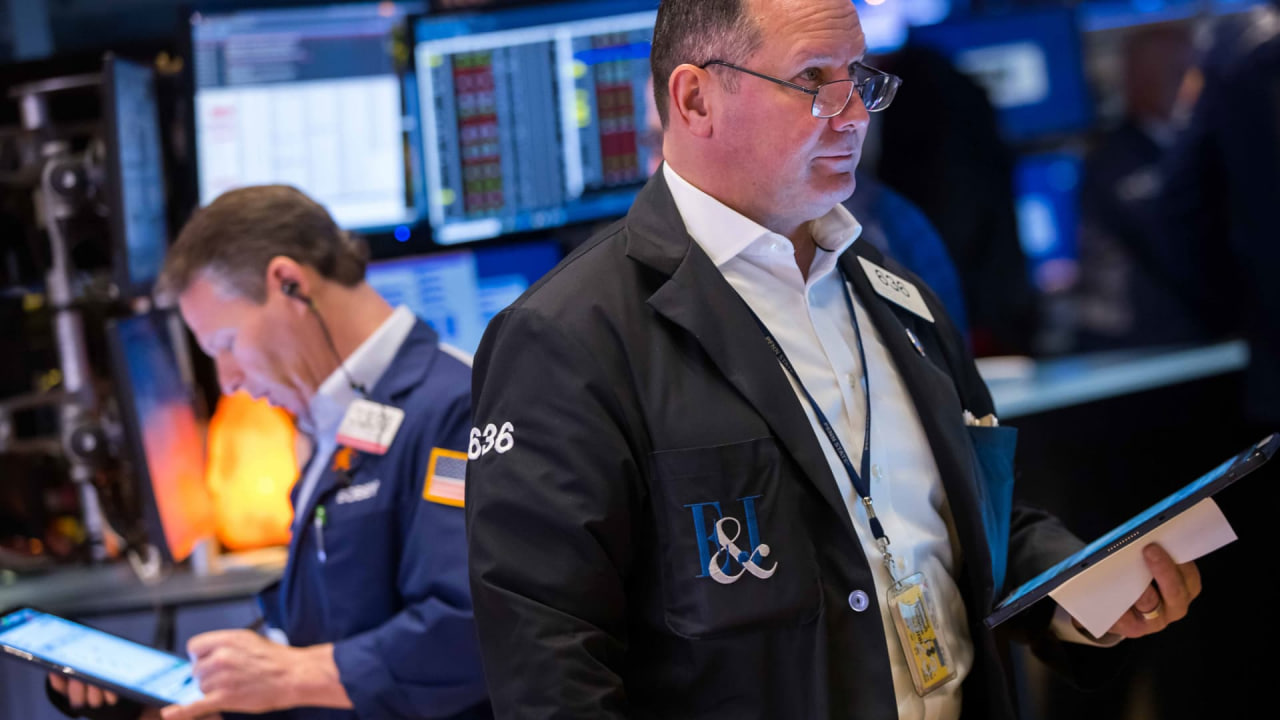Visa's Layoffs: A Sign of the Times or a Blip on the Radar?
Meta Description: Visa, a global leader in payments, is facing headwinds and considering laying off approximately 1400 employees. This article explores the reasons behind this decision, its potential impact on the industry, and what it means for the future of the payment giant.
The news of Visa's potential layoffs sent shockwaves through the industry, raising questions about the health of the global economy and the future of financial services. While Visa has remained tight-lipped about the specifics, the news comes at a time when many companies are facing pressure to cut costs and streamline operations in the wake of economic uncertainty. This isn't just a blip on the radar; it's a signal of a changing landscape for the world's largest payment processor.
So, what's driving this decision? Are we looking at a one-off event or a sign of things to come? This article dives deep into the potential reasons behind Visa's layoffs, analyzing the broader industry trends and the company's own strategic outlook. We'll explore the potential impact of these cuts on the company's future, the implications for the payment industry as a whole, and what this means for consumers and businesses that rely on Visa's services. We'll also examine the broader economic context, considering the impact of inflation, rising interest rates, and the ongoing geopolitical uncertainty.
Unpacking Visa's Layoffs: A Deeper Dive
The decision to lay off a significant number of employees is never taken lightly. This is particularly true for a company like Visa, known for its robust financial performance and global reach. So, what are the key factors driving this move?
1. Economic Headwinds: A Global Challenge
The global economy is facing a perfect storm of challenges: inflation is at multi-decade highs, interest rates are rising, and geopolitical tensions are creating uncertainty. These factors are affecting consumer spending and impacting businesses across sectors, including the financial services industry.
Visa, like its peers, is feeling the pressure. While its core business of processing payments remains resilient, the company is facing slower growth rates and a potential decline in transaction volumes. This challenging environment has forced Visa to re-evaluate its cost structure and look for ways to optimize its operations.
2. Shifting Consumer Behavior: The Rise of Digital Payments
Another key factor driving Visa's decision is the changing landscape of consumer behavior. The pandemic accelerated the adoption of digital payments, with consumers increasingly embracing contactless and mobile payment options. While this trend is good news for Visa in the long run, it also presents challenges. Competition in the digital payment space is fierce, with players like Apple Pay, Google Pay, and PayPal vying for market share.
Visa needs to adapt to this evolving landscape, ensuring its products and services remain competitive in a crowded field. This means investing in technology, innovation, and strategic partnerships, while also managing costs effectively.
3. Cost Optimization: A Strategic Imperative
In today's economic climate, companies across industries are looking to optimize their cost structures and improve efficiency. This is no different for Visa. While the company has a strong financial position, it's essential to manage expenses prudently and ensure long-term sustainability.
The layoffs, while painful, are seen as a necessary step to streamline operations, reduce redundancies, and focus resources on strategic priorities. This includes investing in areas like digital payments, cybersecurity, and data analytics - areas crucial for future growth.
The Impact on the Industry and Consumers
Visa's layoffs are likely to have a ripple effect on the broader payments industry. Other payment processors, like Mastercard and Discover, could be forced to take similar measures as they navigate the current economic climate. These decisions could lead to a consolidation in the industry, with smaller players struggling to compete with larger, more established companies.
For consumers, the impact could be felt in the form of higher transaction fees or reduced benefits. While Visa has been known for its robust customer rewards programs, the company may need to re-evaluate its spending in this area as it looks to cut costs.
However, it's important to remember that Visa's core business remains strong. The company's network is used by millions of merchants and consumers worldwide, and it's unlikely that the layoffs will significantly impact its ability to process payments efficiently.
The Future of Visa: Navigating a New Era
Despite the challenges it faces, Visa remains a dominant player in the payments industry. The company has a strong track record of innovation, a robust financial position, and a global network that reaches billions of consumers and merchants.
The layoffs are a reminder that even industry giants need to adapt to changing market conditions. However, they are also a sign of Visa's commitment to long-term sustainability and its ability to navigate a new era of digital payments.
The company's focus on innovation, its investments in new technologies, and its strategic partnerships are all signs that it is well-positioned to remain a leader in the payments industry for years to come.
Keyword: Visa Layoffs
The decision by Visa to lay off employees has sparked much discussion and analysis. While it is a challenging time for the company, it is important to understand the context and the broader industry trends that are driving this decision. The layoffs are not a sign of weakness, but rather a strategic move to ensure Visa's long-term success in a rapidly changing environment.
FAQs:
1. Why is Visa laying off employees?
Visa's layoffs are driven by a combination of factors:
- Economic Headwinds: Inflation, rising interest rates, and geopolitical uncertainty are impacting consumer spending and business growth.
- Shifting Consumer Behavior: The rise of digital payments and increased competition in the space require Visa to adapt its strategy.
- Cost Optimization: In this economic climate, companies need to manage expenses prudently and ensure long-term sustainability.
2. What is the impact of these layoffs on consumers?
Consumers could experience higher transaction fees or reduced benefits as Visa re-evaluates its spending. However, the layoffs are unlikely to impact Visa's ability to process payments efficiently.
3. What does this mean for the future of Visa?
Despite the challenges, Visa remains a dominant player in the payments industry. The layoffs are a sign of the company's commitment to long-term sustainability and its ability to navigate a new era of digital payments.
4. What is Visa's strategic plan for the future?
Visa is focusing on innovation, investments in new technologies, and strategic partnerships to remain a leader in the payments industry.
5. Will these layoffs impact other payment processors?
It is possible that other payment processors, like Mastercard and Discover, could face similar pressures and take similar measures.
6. What is the overall impact of these layoffs on the payments industry?
The layoffs could lead to consolidation in the industry, with smaller players struggling to compete with larger, more established companies.
Conclusion:
Visa's layoffs are a sign of the times, reflecting the economic challenges and industry trends that companies are facing globally. While the decision is difficult, it is a prudent one for the company as it navigates a new era of digital payments. Visa remains a global leader in payments, with a strong track record of innovation and a commitment to long-term sustainability. The company's focus on technology, strategic partnerships, and customer experience will be key to its continued success in the years to come.



